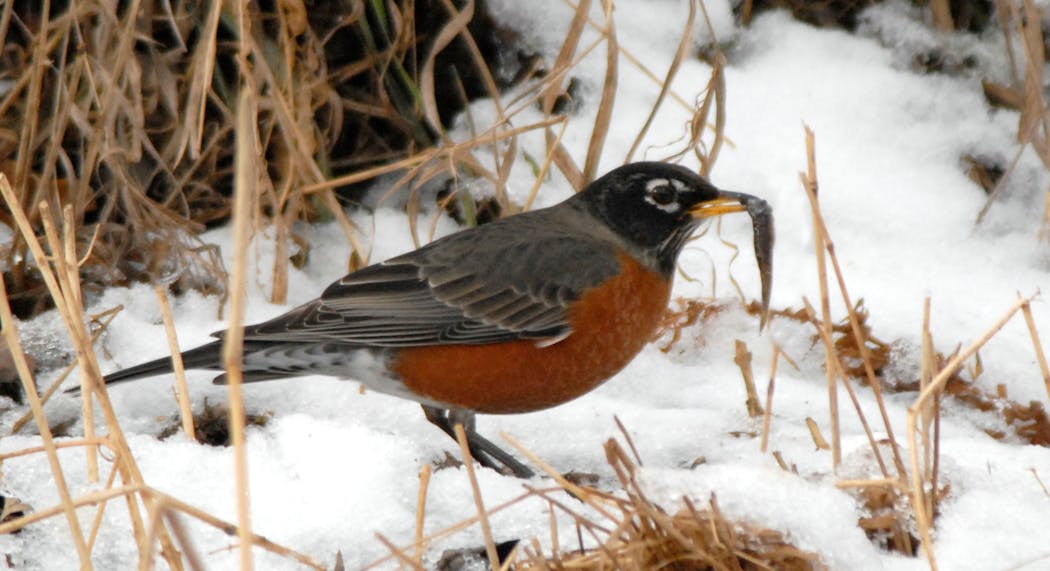Songbird migration has always been a climate thing. Migrants go south to escape harsh winters, some, however, no farther than southern Iowa or Missouri, others deep into South America.
Migrants choose from three routes to find winter warmth. One is to simply fly a state or two south, a weekend trip.
The second is across the Gulf of Mexico, the third into Mexico and/or Central America and beyond.
American robins in your neighborhood once were a certain sign of spring. They have become resident in parts of the Twin Cities, a fourth migration choice being simply, don't go.
Robins have provided flashes of winter color in our western Hennepin County neighborhood for the past several years. I've wondered if winter robins reacted to a warming climate years before it made newspaper headlines.
They survive on fruits of red cedar, dogwood, hackberry, sumac, wild grape, poison ivy and other plants. I've seen them eating dead minnows outside a bait shop.
Eastern bluebirds over-winter in southern Wisconsin, according to a friend who has bluebird nest boxes. Winter bluebirds in Minnesota are possible. They too would live on wild fruit and berries, probably skipping the fish course.
Blue jays are common winter birds at our feeders, and most likely yours. They can be residents or short-distance migrants from Up North.
Barn swallows are regular nesters here, migrating along the Gulf Coast as they head for South America. A small number of them established a breeding population in eastern Argentina about 30 years ago, according to the Cornell Lab of Ornithology.
"Rather than interpret this new swallow population as a mere oddity, this colonization may be the initial phase of an evolutionary process," said David Winkler, professor of ecology and evolutionary biology at Cornell's College of Agriculture and Life Sciences.
The research team speculated that construction of buildings and bridges over the past 50 years has provided the birds with new nesting opportunities. They plaster mud baskets to walls. The change saved the birds annual migration roundtrips of 12,000 miles.
Cliff swallows, summer residents here, also have established breeding colonies in Argentina.
Tree swallows, also nesters here, begin fall migration in July and August, heading for Florida and Central America. Our tree swallows are thought to follow the Mississippi River south.
Common yellowthroats, warblers nesting in shrubby vegetation near water, are residents in Gulf states and up both coasts. Our yellowthroats are fall migrants to Mexico, Cuba and other Caribbean islands, and Central America.
Most fall migrant ruby-throated hummingbirds fly across the Gulf of Mexico to Central America. Scarlet tanagers spend their winter in northern South America. American redstarts, another warbler species common here also migrate to northern South America, as do Eastern meadowlarks.
There are 458 species of North American birds that are regular migrants.
A new tool from National Audubon lets you track bird migration movement end to end. There is a series of animated maps showing movement of a bird species as it travels in spring and fall each year.
Choose a bird species from an illustrated list or enter the name of any North American bird species. Included are conservation statistics, stories and more maps.
If you've ever wondered where your yard birds go in the fall, this very cool tool has the answer. The link is explorer.audubon.org/explore/species/1040/migration.
Lifelong birder Jim Williams can be reached at woodduck38@gmail.com.

The 5 best things our food writers ate this week

A Minnesota field guide to snow shovels: Which one's best?

Summer Camp Guide: Find your best ones here

Lowertown St. Paul losing another restaurant as Dark Horse announces closing





